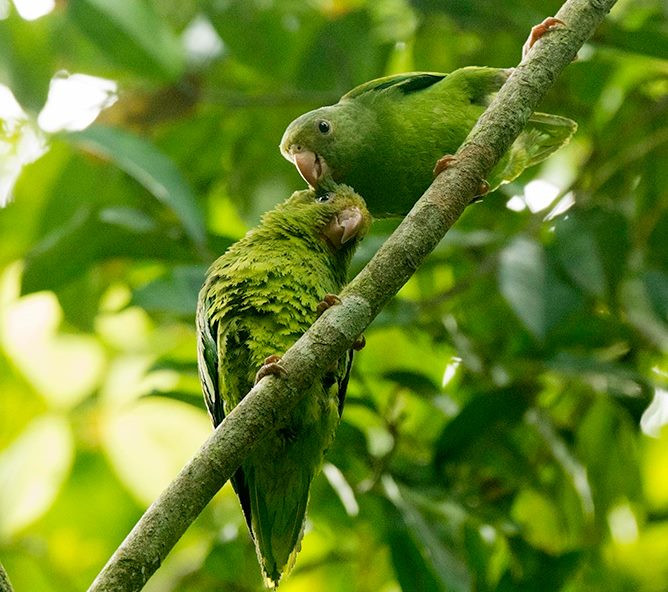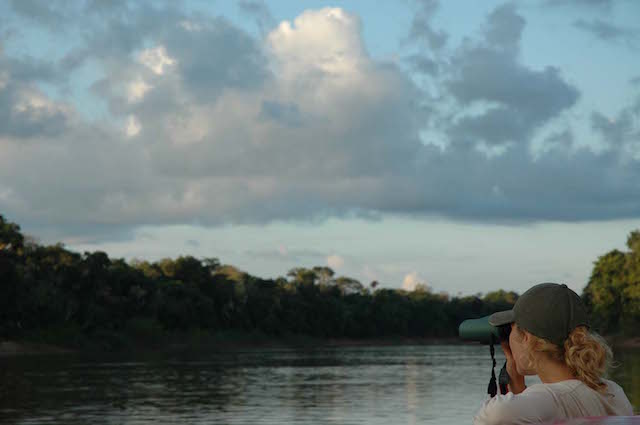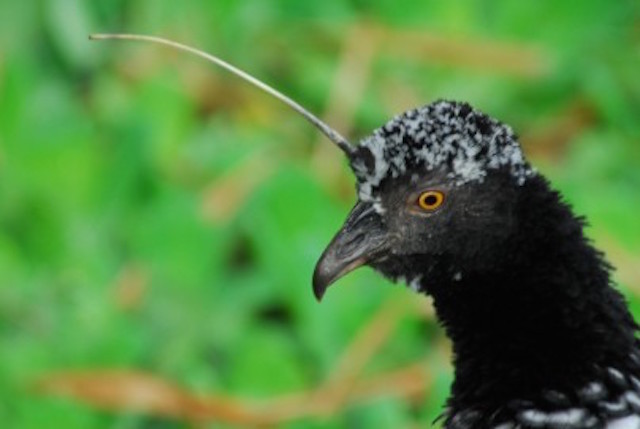Allpahuayo-Mishana & Pacaya-Samiria Birding
6 days’ birding in two of Peru’s Amazonian protected areas.
2 nights in Allpahuayo-Mishana; 3 nights in Pacaya-Samiria.
Huge variety of species, including endemics.
Basic accommodation, including camping. Expert guides.
Overview
Allpahuayo-Mishana & Pacaya-Samiria Birding: 6-Day Itinerary Outline:
Day 1: Arrive Iquitos. Transfer to Allpahuayo-Mishana Reserve.
Day 2: Allpahuayo-Mishana Birding.
Day 3: Transfer to Nauta. Boat to Pacaya-Samiria.
Day 4: Pacaya-Samiria Birding.
Day 5: Pacaya-Samiria Birding
Day 6: Boat to Nauta. Drive to Iquitos.
Prices
Below prices are per person, based on two people sharing a room. Includes all transfers, accommodation, meals and English-speaking birding guide.
NB. Discounts available for larger groups.
| Itinerary | Length | Prices From |
|---|---|---|
| 6 Days | £1,842 / $2,333 |
Itinerary
Day 1: Iquitos - Allpahuayo-Mishana National Reserve (L, D)
This morning, we greet you at Iquitos Airport or your Iquitos hotel.
If coming by plane, we recommend arriving before 9am.
We then make the 24 km (15 miles) drive to Allpahuayo-Mishana National Reserve which is adjacent to the road that connects Iquitos with Nauta.
This white-sand forest reserve is renowned for its bio-diversity, including at least 475 bird species … of which five are known to be endemic:
Ancient or Gentry’s Antwren (Herpsicochmus gentryi)
Mishana Tyrannulet (Zimmerius villarejoi)
Northern Chestnut-tailed Antbird (Mirmeciza castena centucolorum)
Iquitos Gnatcatcher (Polioptila clementsi)
Allpahuayo Antbird (Pernocstola arenarum)
We check in to our basic accommodation at Allpahuayo-Mishana Research Center, and then head out to explore the Reserve’s trails on foot.
We return to the Research Center for lunch.
In the afternoon, we continue hiking along trails, with the possibility of seeing toucans, cotingas and antwrens, as well as the endemic species.
Dinner and overnight at Allpahuayo-Mishana Research Center.
Day 2: Allpahuayo-Mishana National Reserve (B, L, D)
This morning, early, we go in search of other species such as manakins and trogon-barbets. Along the way, we may also spot poison dart frogs (Dendrobates).
We have breakfast back at the Research Center.
We then take a walk along the side of the Iquitos - Nauta road where we should find parakeets and parrots feeding on the fruit trees that grow here, along with caciques, oropendolas, tanangers and pompadour cotinga.
We return to the Research Center for lunch.
In the afternoon, we continue our exploration of different trails, hoping to see, not only birds, but also various kinds of primates, such as tamarins, mon sakis and titis that are common to Allpahuayo-Mishana.
Dinner and overnight at Research Center.
Day 3: Allpahuayo Mishana National Reserve - Pacaya Samiria National Reserve (B, L, D)
After breakfast, we drive to the town of Nauta, which is about an hour away.
Upon arrival in Nauta, we board the boat which takes up the Marañon River, into the Pacaya-Samiria National Reserve, a journey of approximately three hours.
On the way, we expect to see a great diversity of birds, including egrets, hawks, horned-screamers, jacanas, parrots and parakeets.
If we are lucky, we may also spot Amazon River dolphins in the water.
We have a picnic lunch on board the boat.
We arrive in the small Amazon village of Arequipa, where our campsite is located.
Dinner and overnight in tents.
Day 4: Pacaya Samiria National Reserve (B, L, D)
Before breakfast, we take our boat onto Yanayacu-Pucate River to observe parrots, toucans, cara-caras, macaws, horned screamers, and scavengers such as the Yellow-headed Vulture, whose habitat is river shores.
We return to our campsite for breakfast.
We spend the morning on foot in the flooded forest, looking for more birdlife.
We are likely to see hoatzin, known locally as ‘shansho’, which feed on the leaves of trees on the banks of oxbow lakes. Hoatzin retain some pre-historic features: fledglings are born with a claw in the middle of each wing, which disappears in adulthood.
We return to the campsite for lunch.
In the afternoon, we continue to explore Yanayacu-Pucate River looking for more wildlife … and a suitable place to camp for the evening.
After dark, we can spot caimans and nocturnal birds, such as the Common Potoo and Great Potoo.
Dinner and overnight at campsite.
Day 5: Pacaya Samiria National Reserve (B, L, D)
Dawn is a great time to watch birds as they leave their nests in order to feed. We should see cotingas, macaws, parrots, king vultures and with a little bit of luck, the Harpy Eagle (Harpia harpyja) before returning to our campsite for breakfast.
After breakfast, we hike a trail which is often frequented by hummingbirds, manakins, antwrens, flycatchers, tanagers, finches … amongst others.
We have lunch, after which the crew will break camp.
We then take the boat down to the mouth of the Yanayacu-Pucate River to our final campsite.
Dinner and overnight at campsite.
Day 6: Pacaya Samiria National Reserve - Nauta - Iquitos (B-L)
After breakfast at the campsite, we return by boat, along the Marañon River, to the town of Nauta.
Here we take a car to Iquitos - either to the airport or a city hotel.
NB. If flying out of Iquitos today, we recommend a flight that departs after 6pm.
End of Services.







